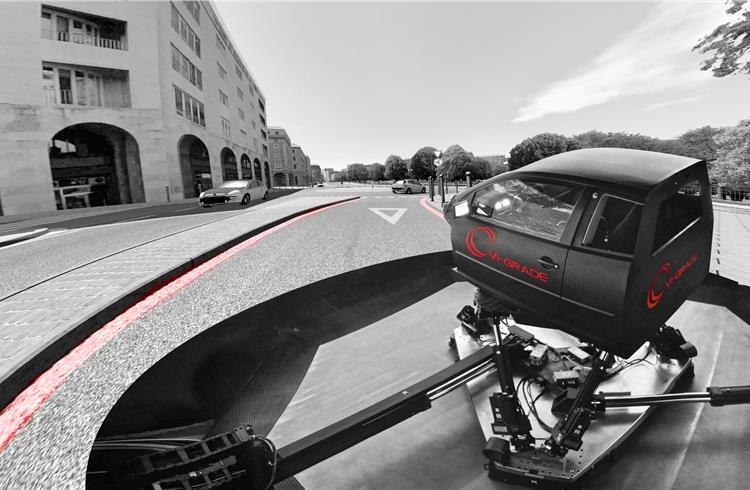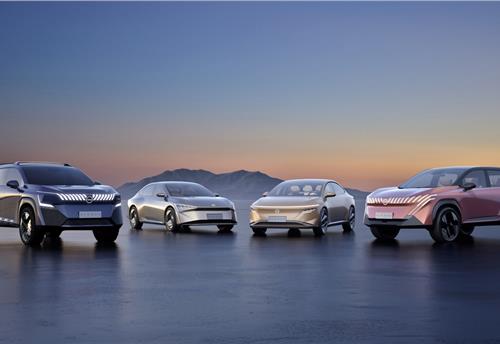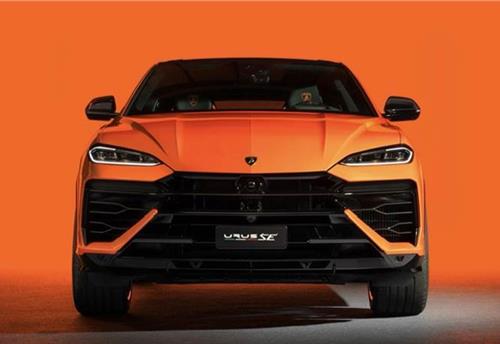Honda to use revolutionary driving simulator to test ADAS, HMI and AD technologies
Honda R&D Europe, with the VI-grade’s DiM250 nine-actuator system, aims to accurately reproduce vehicle ride, handling and acceleration characteristics within a single simulator.
Honda will become the world’s first car manufacturer to adopt new state-of-the-art driving simulator technology, based on a revolutionary architecture called DiM250 (Driver-in-Motion).
Most driving simulators make use of motion technology derived from flight simulators, and typically use six actuators to deliver six ‘degrees of freedom’. However, to accurately reproduce vehicle ride, handling and acceleration characteristics within a single simulator, VI-grade’s DiM250 system uses nine actuators to create additional ranges of motion. It is unique in the industry.
According to Yasunori Oku, executive vice-president, Honda R&D Europe, “We expect to use DiM250 primarily for vehicle dynamics and ride applications, as well as using it as a crucial tool to develop and test our ADAS, HMI, powertrain and autonomous driving technologies earlier in the design process”.
“The DiM250 technology will provide an ideal common development platform for our research and development activities, where all teams involved can work together in one single collaborative environment,” he adds.
The DiM250 system has been designed by simulator software developer VI-grade, and is engineered and manufactured by Saginomiya, the leading provider of automatic controls and test systems in Japan . Its electrically-driven nine-actuator platform is more advanced than conventional ‘hexapod’ designs, and the whole system moves by sliding on airpads, rather than using additional mechanical rails. The airpads counterbalance the high payloads and dynamic loads, and help to make the simulator extremely stiff, silent and reliable.
The integration of Software-in-loop (SIL) and Hardware-in-loop (HIL) applications within the simulator will enable designers and engineers to evaluate advancements in the vehicle development cycle before physical prototypes have even been built. It will also allow the simulator to more accurately imitate problem scenarios to test safety systems and controls.
Juergen Fett, managing director, VI-grade, says, “We are looking forward to a continuous and successful usage of our technology at Honda R&D, helping the company to develop even better cars in a shorter time, while providing us with precious feedback to further improve our driving simulation solutions.”
The new simulator will be installed at Honda R&D Europe’s technical centre in Offenbach, Germany, in the second half of 2018.
What is Driver-In-Motion?
The revolutionary DiM (Driver-in-Motion) driving simulation turnkey solutions from VI-grade provide automotive engineers with a complete set of innovative, integrated driving simulators for a new generation approach to system-level simulation, allowing companies to bridge the gap between virtual prototyping and testing.
The dynamic configuration provides motion feedback to the driver thanks to an innovative nine-degrees-of-freedom moving platform with reduced overall dimensions and large travels. The machine architecture is called Driver in Motion (DiM) and its kinematics has been designed, for the first time in history of motion platforms, to implement in the best possible way the motion cueing technology that has been developed and tested by VI-grade.
The company says this family of simulators are based on a much more compact and much less expensive driving simulator architecture with respect to conventional simulators with similar workspace. Moreover, these solutions are fully scalable, meaning that it is possible to upgrade from static to dynamic simulator, reusing all components that have been already purchased. The driving simulation solutions from VI-grade are based on VI-DriveSim, the product which provides the core software environment for all driving simulation solutions from VI-grade.
RELATED ARTICLES
Kia displays EV5 and Sonet SUVs for Chinese market
Kia has unveiled a number of key models and new technologies for Chinese customers at the 2024 Beijing International Aut...
Nissan targets growth in China, unveils four NEV concepts at Beijing Motor Show
The two EVs and two plug-in hybrids are a joint effort with Nissan’s local partner Dong Feng and aimed to better address...
Lamborghini unveils Urus SE ahead of Auto China 2024
Electric-only range of 60km helps reduce emissions by 80%.





 By Autocar Pro News Desk
By Autocar Pro News Desk
 04 Dec 2017
04 Dec 2017
 5836 Views
5836 Views









